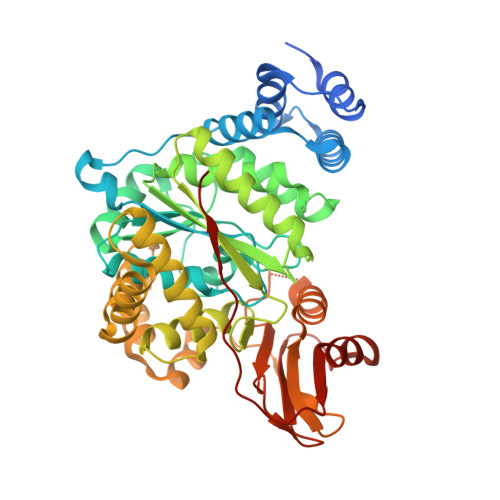Crystal Structure of Human Thymidine Phosphorylase in Complex with a Small Molecule Inhibitor
Norman, R.A., Barry, S.T., Bate, M., Breed, J., Colls, J.G., Ernill, R.J., Luke, R.W.A., Minshull, C.A., Mcalister, M.S.B., Mccall, E.J., Mcmicken, H.H.J., Paterson, D.S., Timms, D., Tucker, J.A., Pauptit, R.A.(2004) Structure 12: 75
- PubMed: 14725767
- DOI: https://doi.org/10.1016/j.str.2003.11.018
- Primary Citation of Related Structures:
1UOU - PubMed Abstract:
Human thymidine phosphorylase (HTP), also known as platelet-derived endothelial cell growth factor (PD-ECGF), is overexpressed in certain solid tumors where it is linked to poor prognosis. HTP expression is utilized for certain chemotherapeutic strategies and is also thought to play a role in tumor angiogenesis. We determined the structure of HTP bound to the small molecule inhibitor 5-chloro-6-[1-(2-iminopyrrolidinyl) methyl] uracil hydrochloride (TPI). The inhibitor appears to mimic the substrate transition state, which may help explain the potency of this inhibitor and the catalytic mechanism of pyrimidine nucleotide phosphorylases (PYNPs). Further, we have confirmed the validity of the HTP structure as a template for structure-based drug design by predicting binding affinities for TPI and other known HTP inhibitors using in silico docking techniques. This work provides the first structural insight into the binding mode of any inhibitor to this important drug target and forms the basis for designing novel inhibitors for use in anticancer therapy.
Organizational Affiliation:
AstraZeneca, Alderley Park, Macclesfield, Cheshire SK10 4TG, UK.















